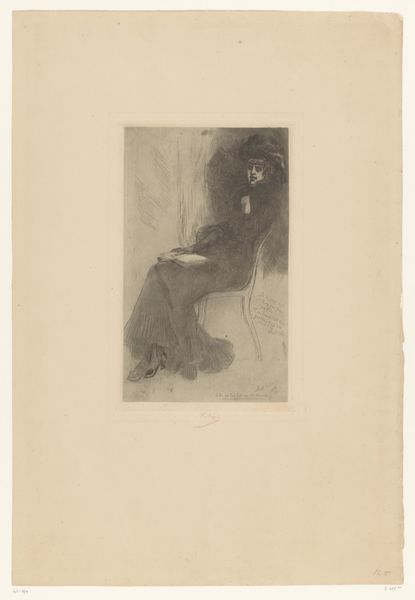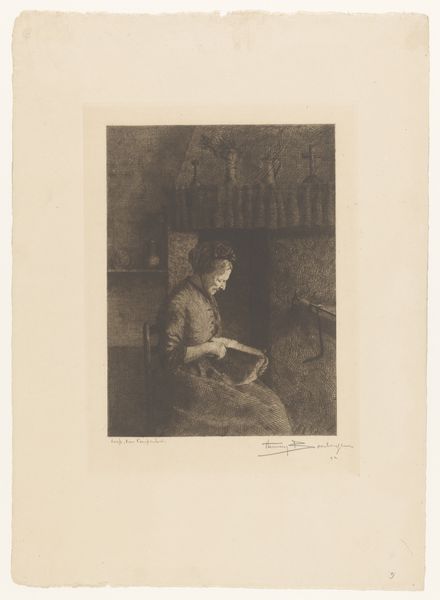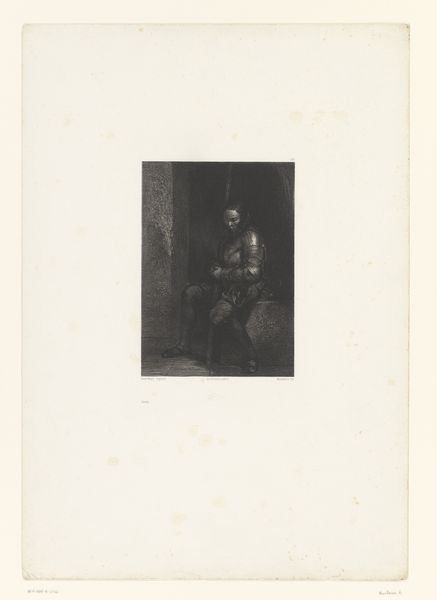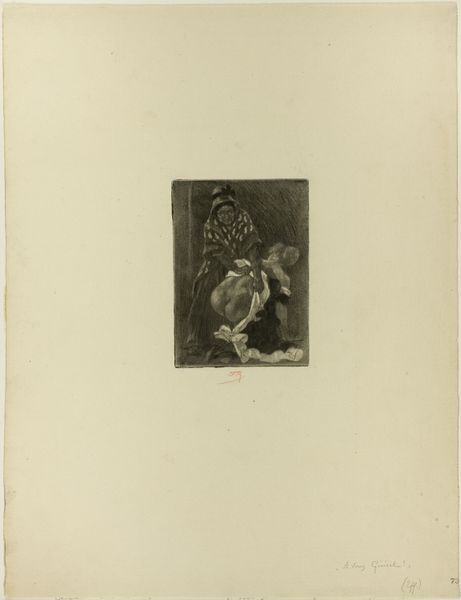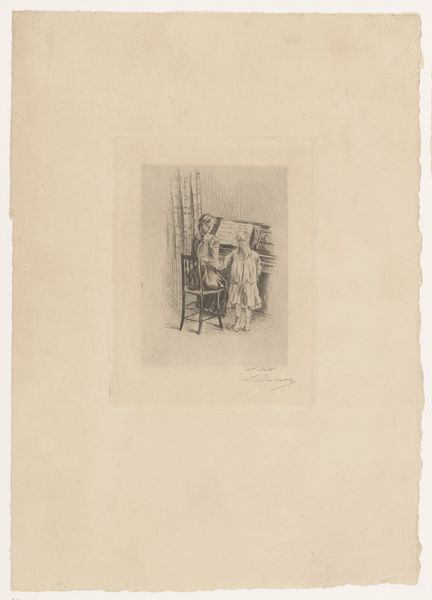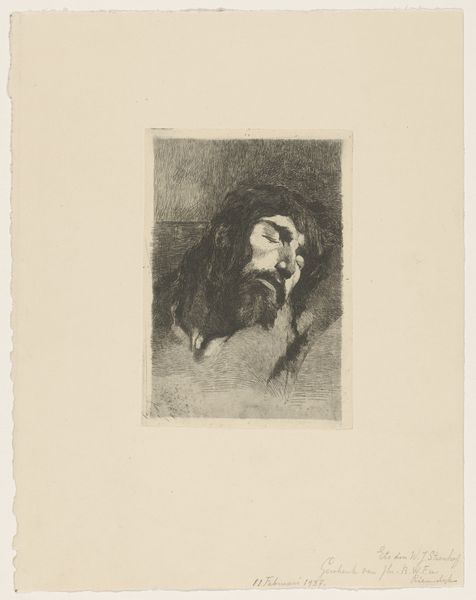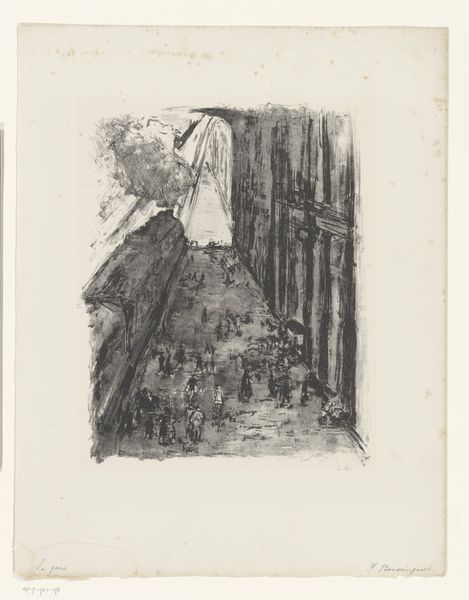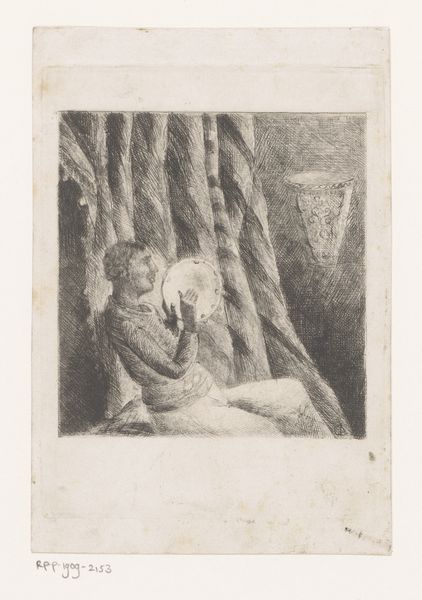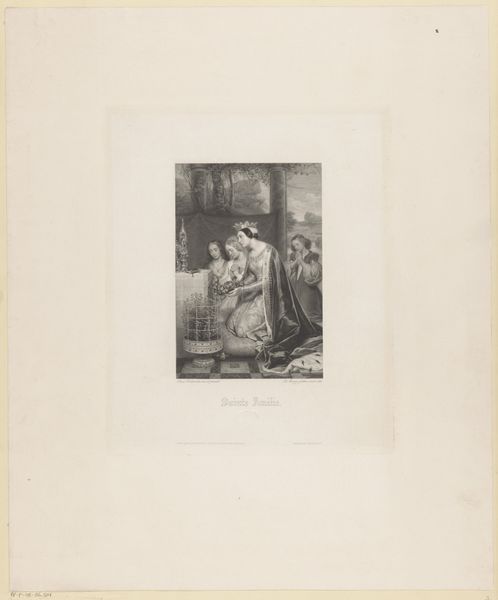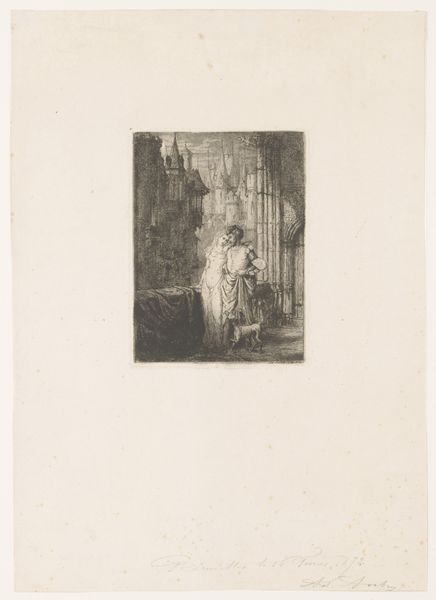
drawing, print, etching, paper, ink
#
portrait
#
pencil drawn
#
drawing
# print
#
impressionism
#
etching
#
pencil sketch
#
figuration
#
paper
#
ink
#
france
Dimensions: 140 × 105 mm (plate); 246 × 170 mm (sheet)
Copyright: Public Domain
Curator: Edgar Degas's "Dancers in the Wings," created between 1879 and 1880, offers a glimpse into the behind-the-scenes world of the ballet. Editor: My initial impression is one of quiet intensity. The dark etching creates an almost dreamlike space, very intimate despite the implied presence of a crowd just beyond the frame. Curator: It’s intriguing to see how Degas uses etching and ink on paper to depict not just the dancers, but the liminal space they occupy. These figures become icons of anticipation, forever waiting in the wings. Notice the compositional shadows, recalling memories. Editor: I am struck by the contrast between the ethereal subject matter, the dancers, and the grounded, almost industrial feel of the printmaking process. All that grinding and acid—such physical labor creates this impression of fragile figures waiting! And what about the quality of the paper itself? Curator: It also emphasizes the delicate balance between performance and reality. Consider the layers of meaning woven into this image; Degas is exploring themes of aspiration, dedication, and the sacrifices required by the ballet. Think, too, how the darkness around the dancers frames them as potential. Editor: Indeed. The social context, too—the lives of these working-class women aspiring to something more through incredibly disciplined physical work. And how that physical demand shapes their bodies! It's all conveyed through those inky lines and that paper stock of that period... fascinating. Curator: Yes, Degas, seemingly casually, encapsulates a wealth of social and psychological insight. The wings serve as both a physical space and a metaphorical threshold. They mark where girls morph into stars. Editor: Precisely. It's in the grit of the process where you find both beauty and truth about these subjects of his that he sketched tirelessly. I’m leaving here thinking about how art, especially works like this, captures the tension between dream and toil. Curator: I’m reminded again of how Degas was exploring not just the physical world of the ballet, but the symbolic weight it carried, even now.
Comments
No comments
Be the first to comment and join the conversation on the ultimate creative platform.

